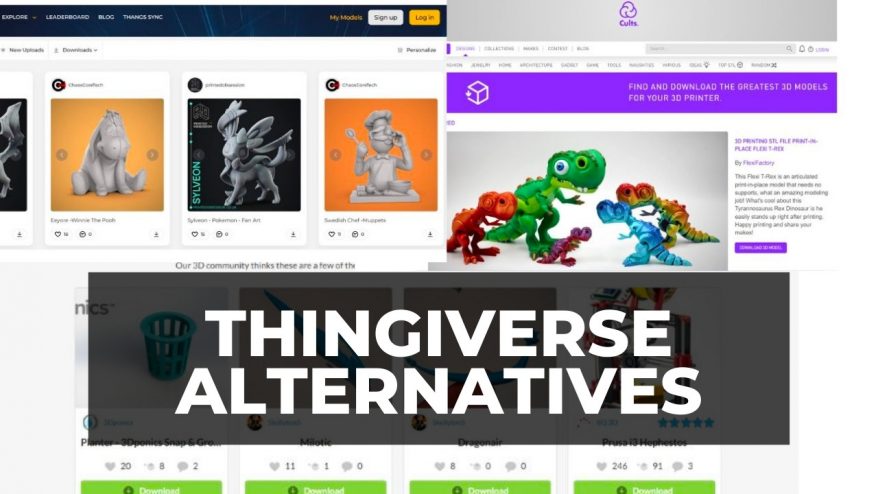If you’re looking for a flexible yet durable filament for your 3D printing project, look no further than Polypropylene filament. PP filament is used in a wide variety of everyday products, making it one of the most common plastics used in both 3D printing and other areas.
- Read and compare other filaments in our 3D printer filament guide.
Polypropylene is extremely popular with manufacturers for everyday items due to its durability and strength, but also its ability to bend without breaking. Its simple chemical structure makes it flexible, yet its rigid, strong bonds maintain excellent impact resistance.
This also means that it is also resistant to fatigue, and will not decay quickly, making products very long-lasting. This can be a problem environmentally if you are making disposable products, but for those intended to last, PP is an excellent choice.
This Polypropylene (PP) filament guide explains general settings for getting the best results from 3D printing Polypropylene, what PP filament costs, the advantages and disadvantages of Polypropylene filament, and its main uses and applications.
Properties of Polypropylene and 3D Printing Parameters
- Printing Temperature: around 240°C +/- 10°C
- Bed Temperature: 85-120°C
- Part Fan Cooling: Required, enclosure optional
There are a few aspects that make Polypropylene a tricky customer. First and foremost, you’re going to need to print at a high temperature. PP’s durability comes from its high melting point. That means that you’ll need to have a high extruder temperature to melt the filament.
- Read and compare extruders in our 3D printer extruder guide.
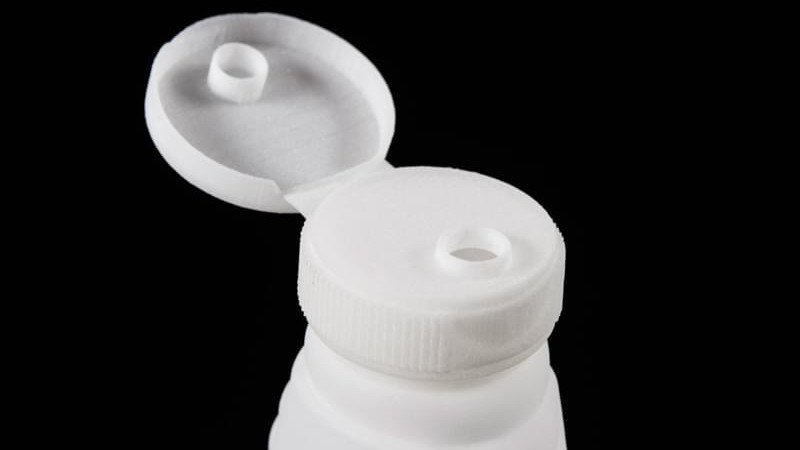
Coupled with this is the fact that PP has a tendency to warp and distort during the cooling process, so you need to be careful about using fans when printing. Make sure your heated bed is hot enough, and if possible used an enclosed 3D printer or enclosure to keep the heat in and temperature constant/
Another potential pitfall is that while Polypropylene has excellent layer adhesion, it has a tough time sticking to other surfaces, such as your print bed. There are ways to combat this, which we’ll get into in the best practices section, but poor adhesion will ruin parts if not fixed.
The material itself also has a few drawbacks. PP is sensitive to ultraviolet light and oxidization, making it unsuitable for prolonged outdoor use.
Despite this, as long as you keep it away from high heats and UV light, Polypropylene products are all but guaranteed to leave you with a product that is versatile, flexible, and durable enough to last as long as is needed.
How much does polypropylene filament cost?
Polypropylene is one of the costlier filaments on the market. Depending on where you buy, expect to pay between $50-$85 per kilogram, with most filaments coming in 500g spools.
We recommend Polypropylene filament ranges including:
- Polypropylene range on Matterhackers here
- Polypropylene Dynamism range here
- Amazon range of Polypropylene filament range available here
This means it is not one to try as a beginner. The larger investment means less experienced people might want to start with a cheaper and simpler filament like PLA first.
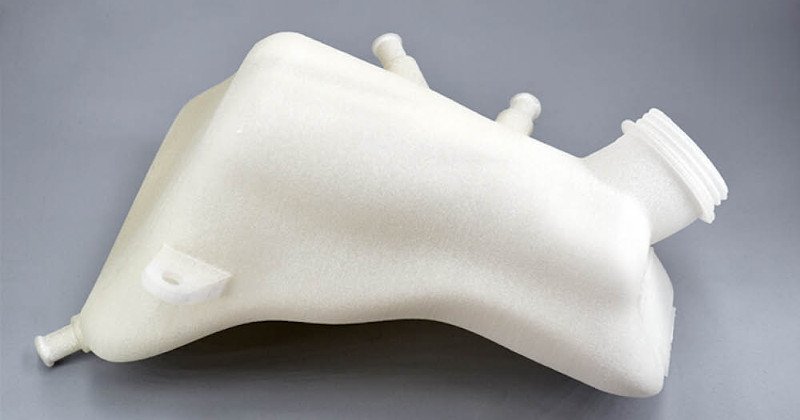
Best 3D Printers For Polypropylene
| Name | Build Volume (mm) | Price | Where to buy |
|---|---|---|---|
| Pulse XE | 250 x 220 x 215 | $999 | Matterhackers here |
| Raise3D E2 | 330 x 330 x 240 | $3,499 | Matterhackers here |
| Ultimaker S3 | 230 × 190 × 200 | $3,850 | Dynamism Store here |
| Raise3D Pro2 | 305 x 305 x 300 | $3,999 | Matterhackers here |
| Ultimaker S5 | 330 x 240 x 300 | $5,995 | Dynamism Store here |
3D Printing Polypropylene Best Practices
Polypropylene build surfaces work well
Polypropylene is extremely effective at bonding to itself, so using more Propylene filament or material prevents adhesion issues. However, it struggles to bond with other materials like your 3D printer’s print bed.
You can get around this by using a thin PP sheet to cover the plate. The melted plastic sticks much more effectively to Polypropylene, making the whole process much smoother. There are professional products available, but if you’re on a tighter budget, even a few strips of sticky tape will do the trick. Just be careful about detaching it from the part afterwards.
Packaging tapes are often made from Polypropylene with adhesives in, so your filaments will stick well to that.
Keep Extruder Heat High
Although it is possible to 3D print Polypropylene at lower temperatures, having the heat on higher will noticeably help with layer adhesion to create the strongest part possible. As mentioned before, PP struggles to bond to other materials and so the high heat will help to combat this.
If you do want to try printing on a lower heat, start high and decrease it over time to see how low you can still print at.
Use the right 3D printer settings
Like with most tasks, preparation is everything! Make sure your bed and extruder at the correct temperature, you’re using your preferred nozzle size, and have the right retraction settings.
Advantages of Polypropylene 3D Printing
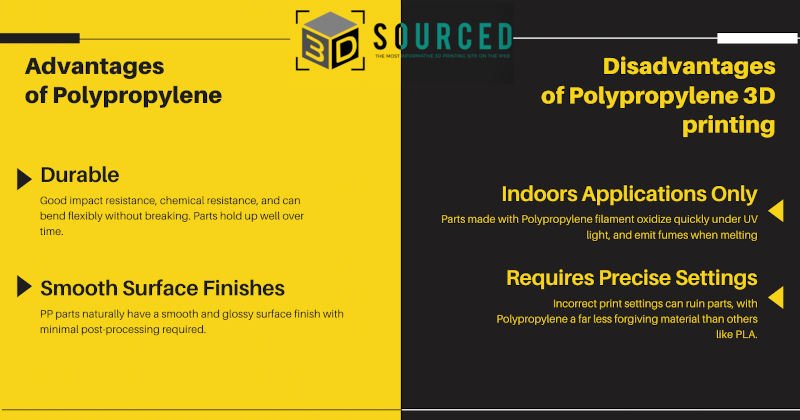
Durable
PP is an extremely durable material, and can take strong impacts without cracking or shattering, and able to bend and flex without snapping. Its rigid chemical structure makes it very difficult to break a Polypropylene part.
It also doesn’t decay over time which makes it very long-lasting. Polypropylene products are built to last.
Home Friendly
PP is a useful material in plastic products around the house, especially in food and kitchenware due to its high chemical resistance. This reduces the likelihood of your product degrading when exposed to acidic ingredients in food.
Moreover, PP is a non-toxic plastic, meaning it does not poison any food items it comes into contact with, and it is moisture resistant, prolonging the time taken for bacteria to grown and preserving its contents for longer. For storing and food, few materials are better than Polypropylene.
Smooth Finishes
With PP, final products usually have a smooth and professional finish that means little aftercare is required to get your part looking good. PP produces a smooth and shiny finish to your product with minimal cost or effort.
While the production speed is a little lower, the decrease in post-manufacturing time balances out this issue.
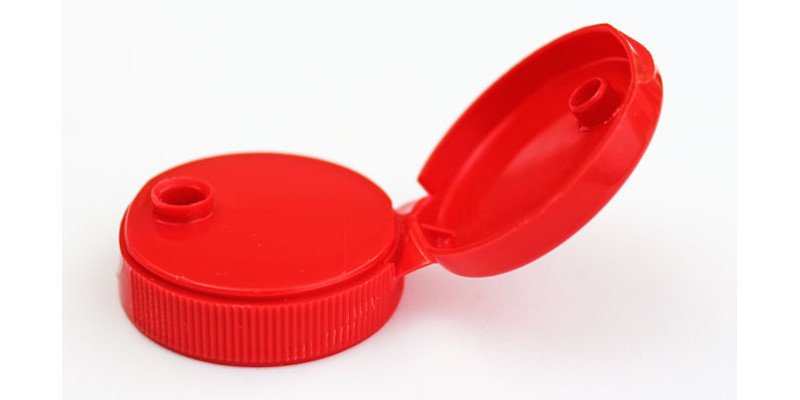
Is Polypropylene filament hygroscopic? And how do you store Propylene?
Polypropylene, like most filaments, is hygroscopic. This means that the material gradually absorbs moisture from the air, becoming “wet”.
Wet filaments become more brittle, have imperfect bubbly textures when printed, and can cause extruder jams and other difficulties.
You can avoid moisture getting into your Polypropylene filament by keeping it in airtight, specialized filament containers. If your filament is exposed to air you can also dry it in a filament dryer. We recommend the following:
- PrintDry filament containers: Available on Matterhackers here / Available on Amazon here
- Filament drying system: Available on Matterhackers here
Drawbacks of Polypropylene Filament
Poor UV resistance
While PP does have a high temperature resistance, it is also flammable. If set alight, it will take a while to melt, but it releases toxic fumes when it burns.
Additionally, Polypropylene’s chemical resistance makes it an ideal material for home applications, but its usefulness is limited by its susceptibility to damage when exposed to outdoor conditions.
PP reacts poorly to prolonged exposure to UV light, and also oxidized quicker than many plastics, causing it to become deformed over time. If you are looking for a better 3D printing filament for outdoor application, consider Acrylonitrile Styrene Acrylate (ASA).
- We also have a guide to ASA filament 3D printing.
Requires Precision
Polypropylene is the kind of material that requires a lot of concentration and experience to print effectively and get the best results. Incorrect printer settings could lead to warping or poorly set parts that are virtually unusable.
Due to the variations in chemical composition, some varieties of PP require specific temperatures, good adhesion is difficult without due diligence, and setting the extruder speed too high can cause jamming issues. With the right settings it works great, but even small errors can create issues.
Applications of Polypropylene
Homeware
Polypropylene is widely used in kitchenware due to its non-toxic and food-friendly properties. Both long lasting and disposable kitchen products use PP.
Food storage containers such as Tupperware use PP to preserve their contents and minimize water evaporation, and plastic plates, cups, and trays also make use of PP as it is less likely to break or degrade. Even disposable items like cutlery and bottle caps use Polypropylene for the same reasons, and plastic bottles, both reusable and disposable, use variants of PP.
Other home appliances like plastic furniture items make use of the strength and shatter resistance of PP, and many plastic toys and games are partly or entirely made from PP. Polypropylene is used heavily in hinges like case hinges, as well as storage containers and watch straps.
- Check out our ranking of the coolest 3D printable toys.
This area is of particular interests to hobbyist as you will be able to print safe, long-lasting, customized items on demand in your own home. More humble projects like these are the frontline in bringing 3D printing technology into our everyday lives.
Medicine
Many 3D printable materials and technologies have useful medical applications, and Polypropylene is no different.
Medical researchers make use of PP in the production of petri dishes, medical bottles, vials and syringes. With 3D printing being able to produce such products on site and to customized dimensions, medical researching efficiency could be exponentially improved.
Paramedics often use Polypropylene containers to house delicate and sterilized equipment for effective first aid as prolonged exposure before use could contaminate bandages. Additionally, strong impacts from a potential high-speed collision could damage the fragile contents and make them unusable.
In pharmaceuticals, pill bottles and containers are produced to take advantage of PP’s strong impact resistance, reducing the likelihood of bottles breaking and losing the medication inside. Again, by reducing material waste and custom producing more personalized containers for each patient, time and money could be saved.
Overall, PP filament is a high-quality and durable 3D printer material with many key engineering and packaging uses.



